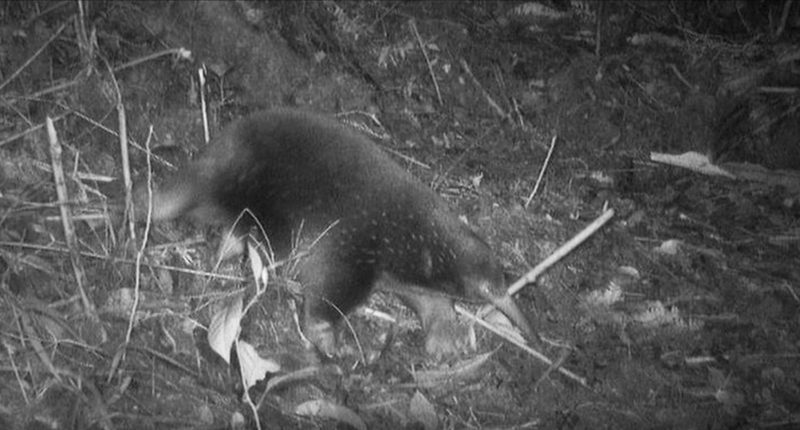GROUND-BREAKING footage of a strange mammal named after David Attenborough that was thought to be extinct has been revealed.
Scientists had previously feared the 200-year-old creature had died out, but the new footage proves otherwise.
An expedition to Indonesia led by Oxford University researchers recorded four three-second clips of Attenborough’s long-beaked echidna.
The video – taken at night – shows the bizarre-looking creature waddling about the undergrowth in pursuit of its next snack.
It has a spiky body, long snout and flat feet that give it a comical waddling action.
Until now, the only evidence that this particular species, Zaglossus attenboroughi, existed was a decades-old museum specimen of a dead animal.
read more animals
Dr James Kempton, a biologist from Oxford University, told BBC News of the moment he discovered the footage of the creature: “I was euphoric, the whole team was euphoric,” he said.
He added: “I’m not joking when I say it came down to the very last SD card that we looked at, from the very last camera that we collected, on the very last day of our expedition.”
Dr Kempton said he had been in letter correspondence with Sir David about the rediscovery and that he was “absolutely delighted”.
The biologist headed a multi-national team on the month-long expedition into unexplored stretches of the Cyclops Mountains – a rainforest habitat 2,000m above sea level.
Most read in Tech
Dubbed “living fossils” echidna’s wandered the earth at the same time as dinasours.
They are the only mammal in the word that lay eggs, and they also have another bizarre feature.
They have one of the “weirdest penises of the animal kingdom,” according to Smithsonian Magazine.
It is a bright red appendage with four heads.
In addition to finding Attenborough’s “lost echidna” the expedition discovered new species of insects and frogs, and observed healthy populations of tree kangaroo and birds of paradise.
Previous expeditions to the Cyclops Mountains had uncovered signs of the mammal that included “nose pokes” in the ground, but they were unable to prove its existence.
That has meant that for the last 62 years the only evidence that Attenborough echidna ever existed has been a specimen kept under high security in the Treasure Room of Naturalis, the natural history museum of the Netherlands.
This is not the only creature that has been discovered recently.
In April we told of a creepy 24-eyed sea creature found in Chinese waters that scientists believe is related to one of the most dangerous creatures known to man.












